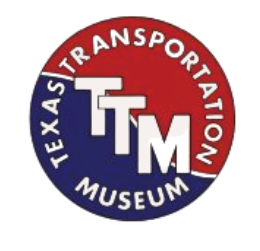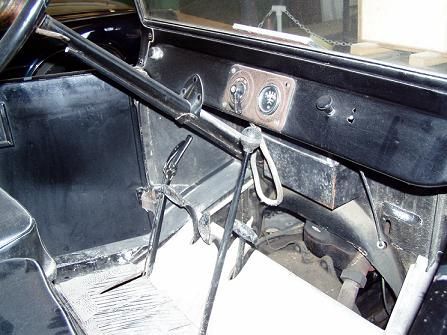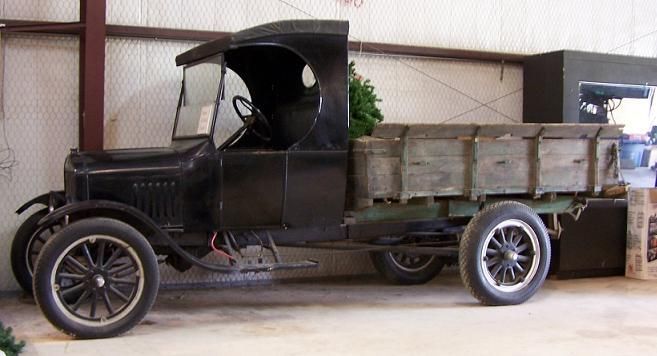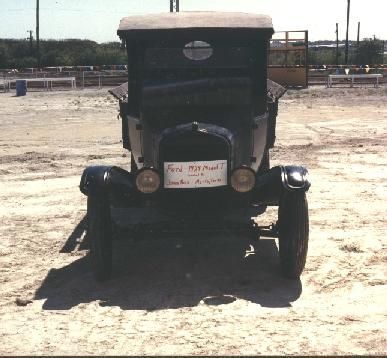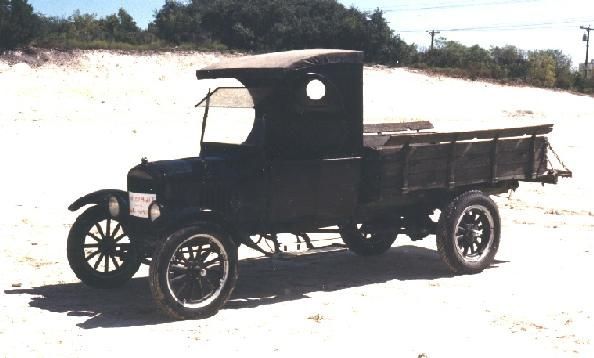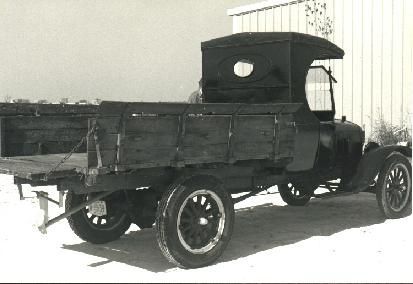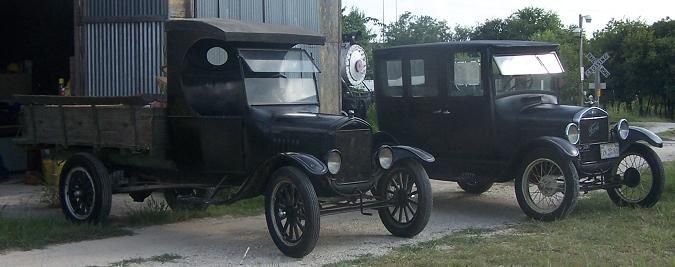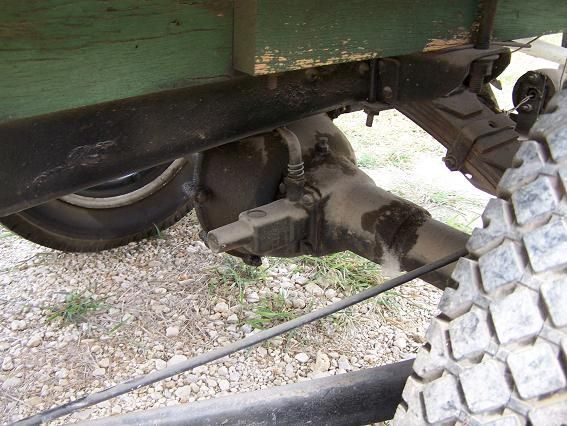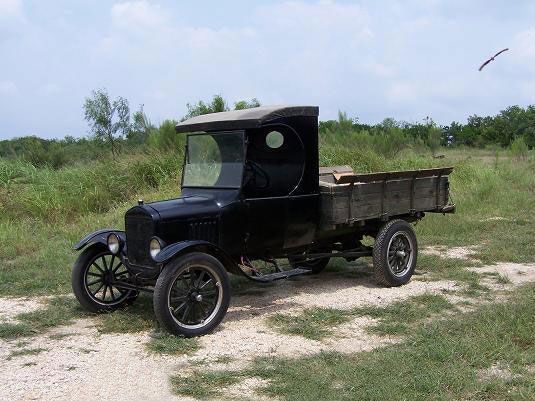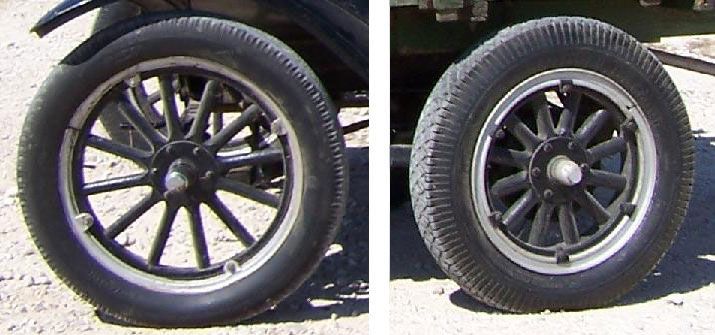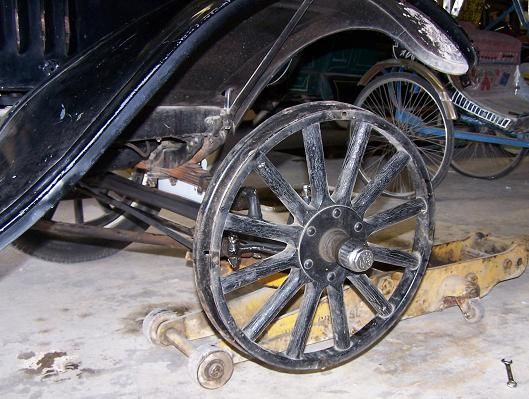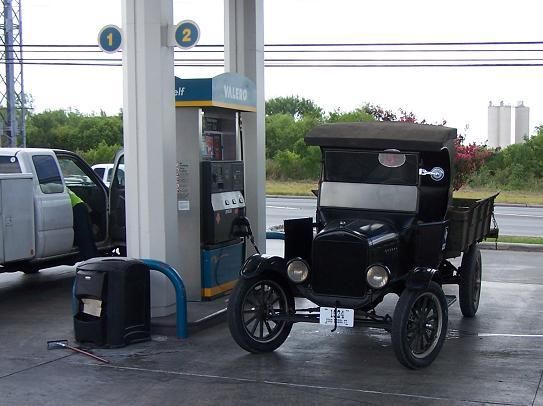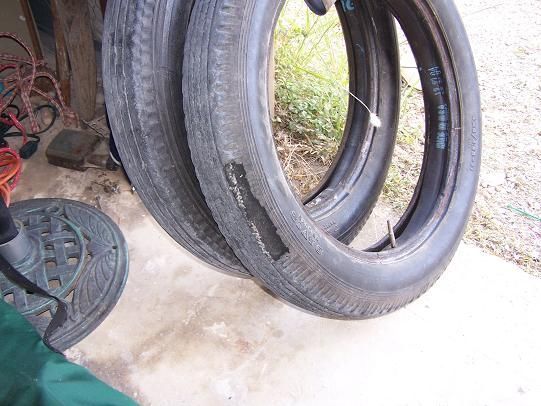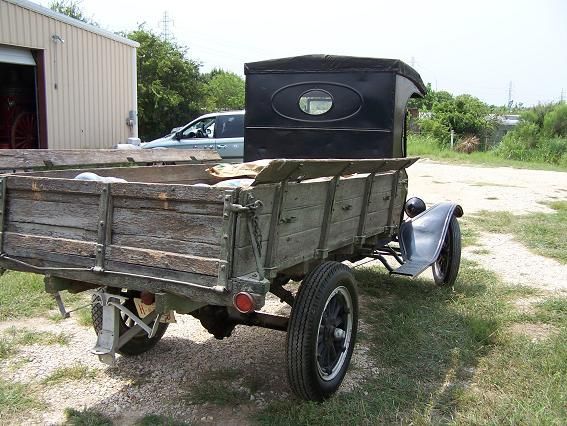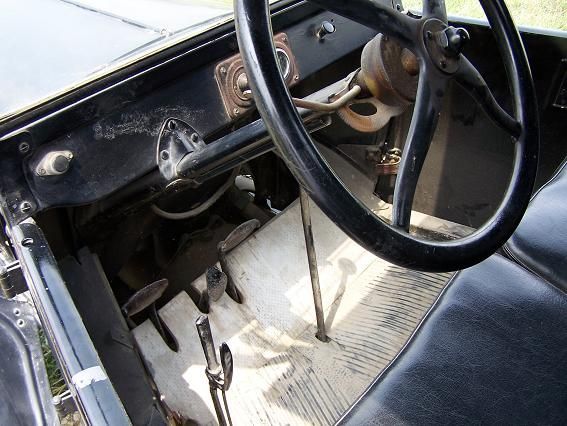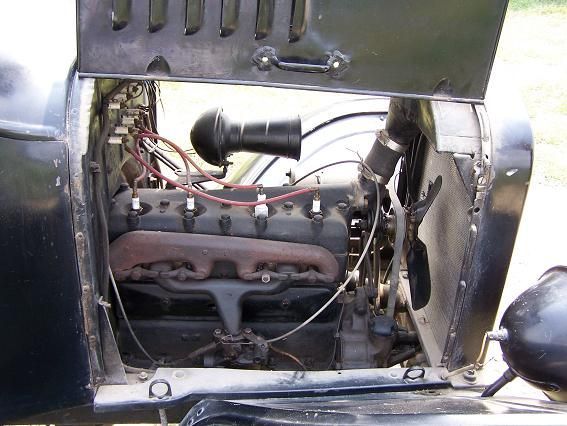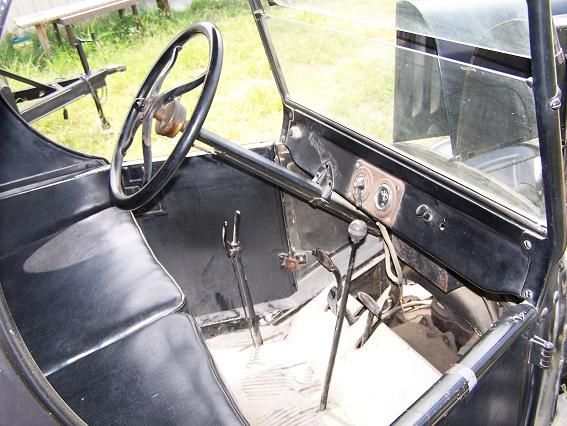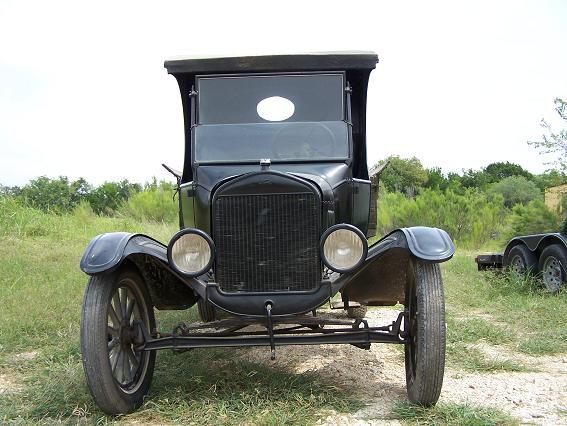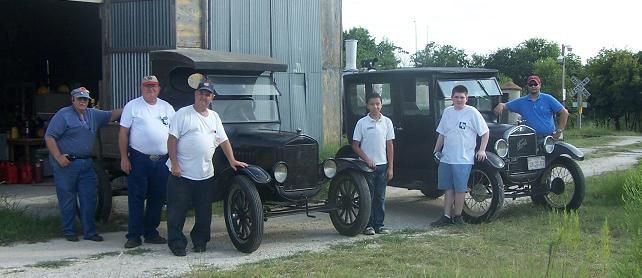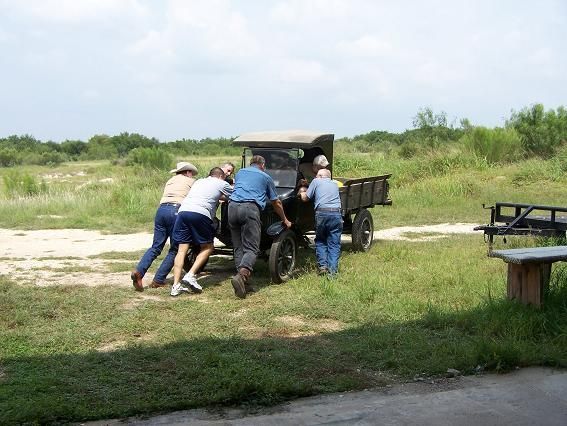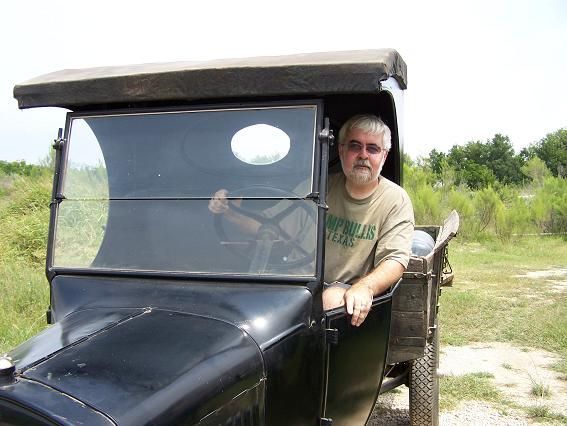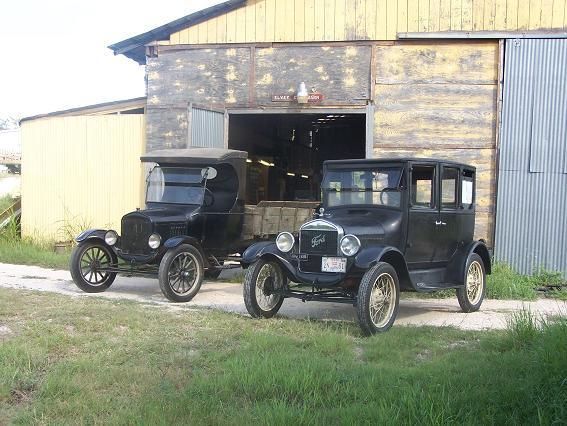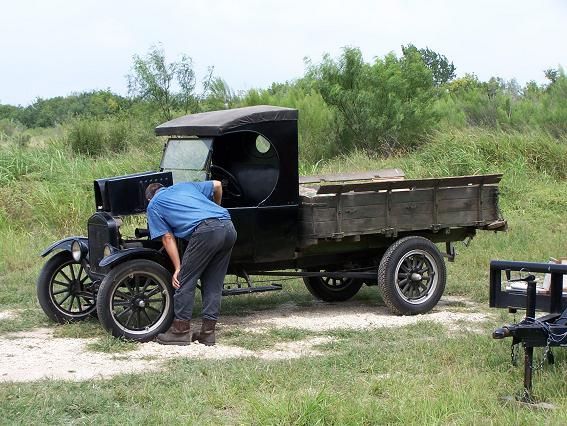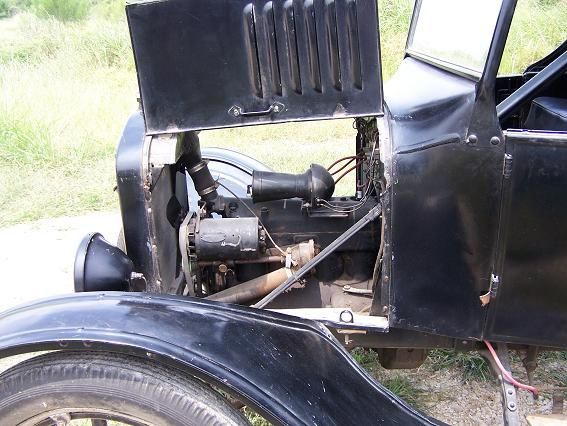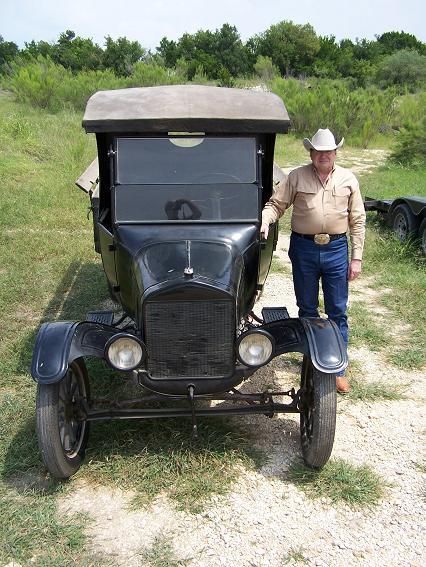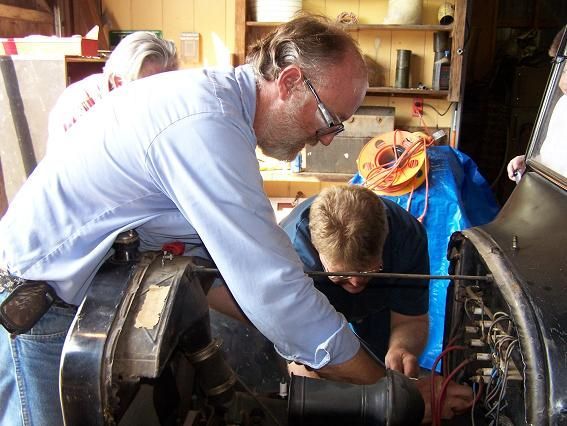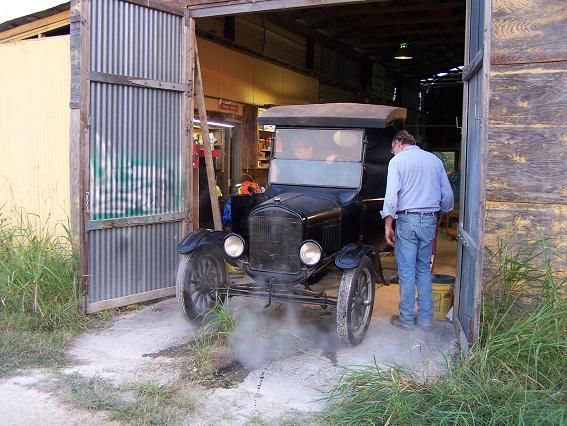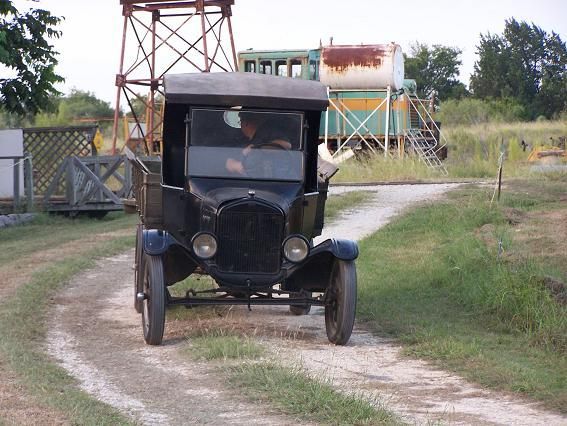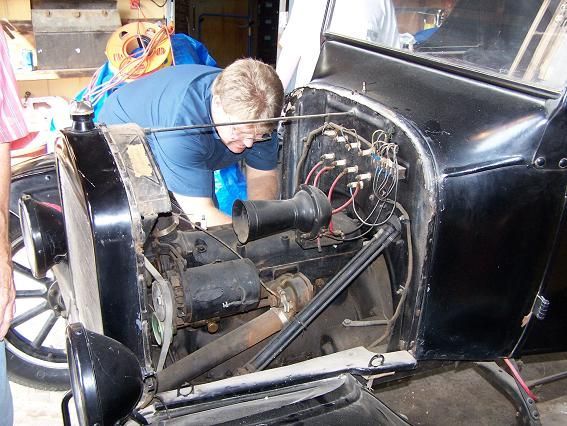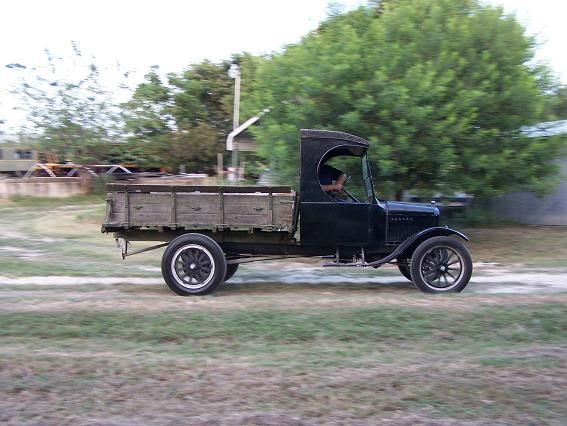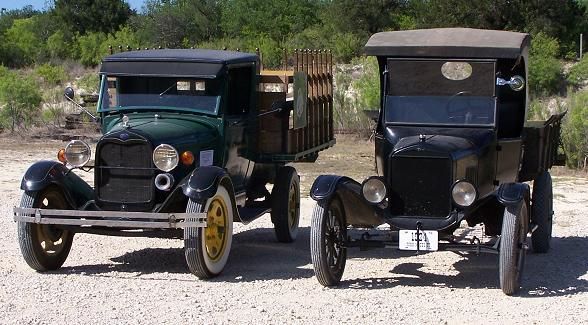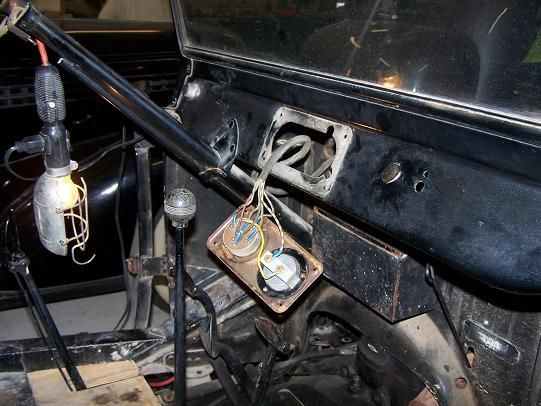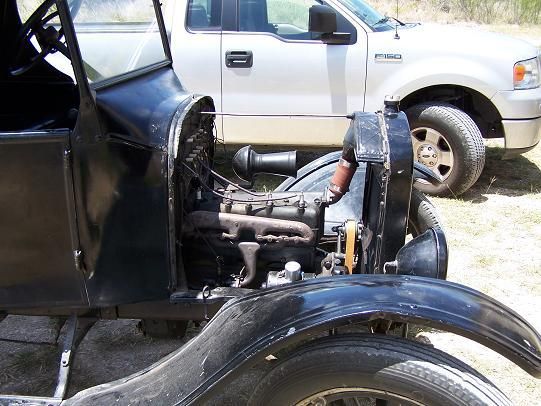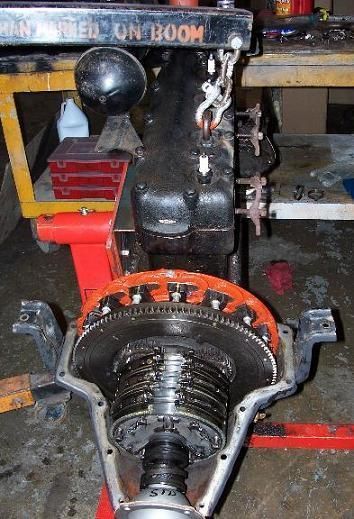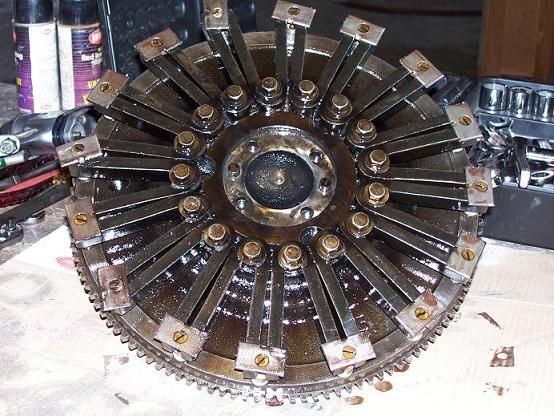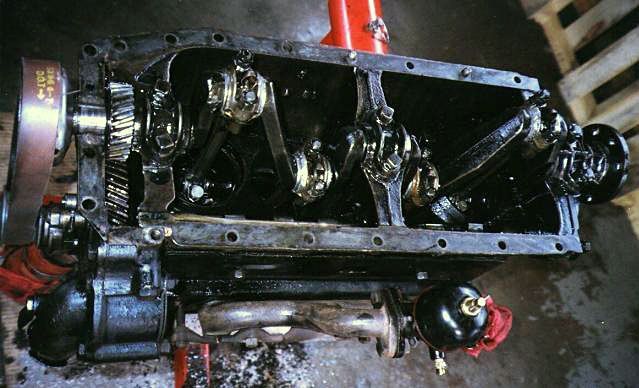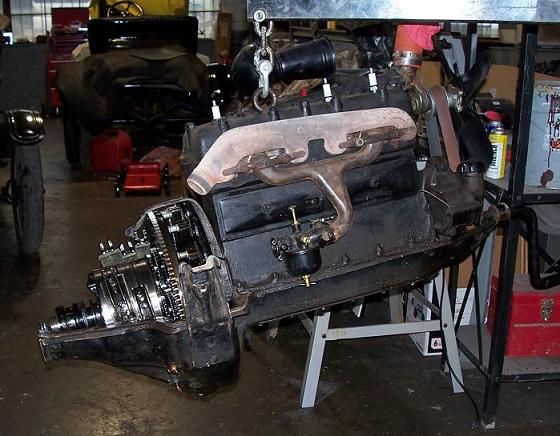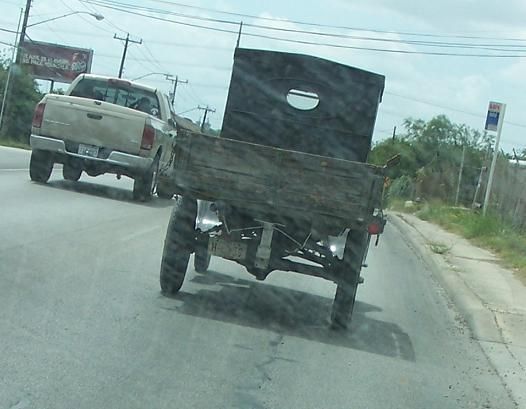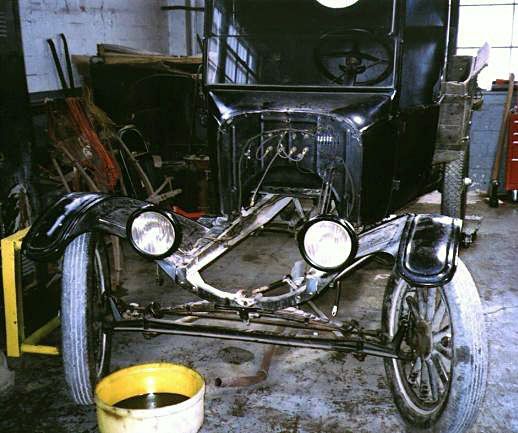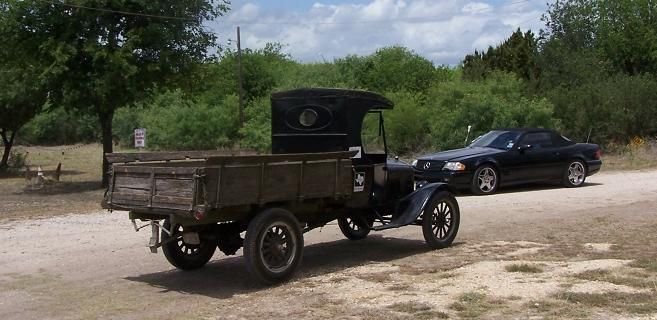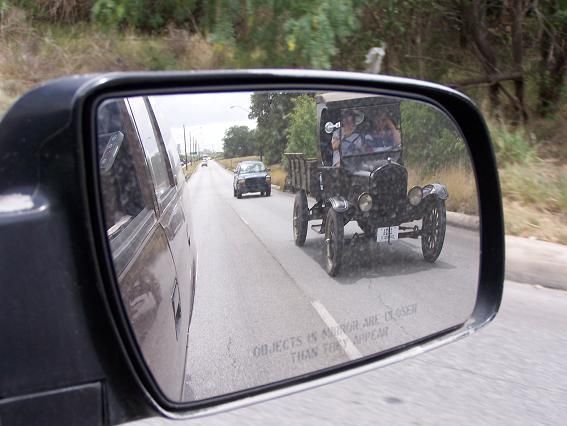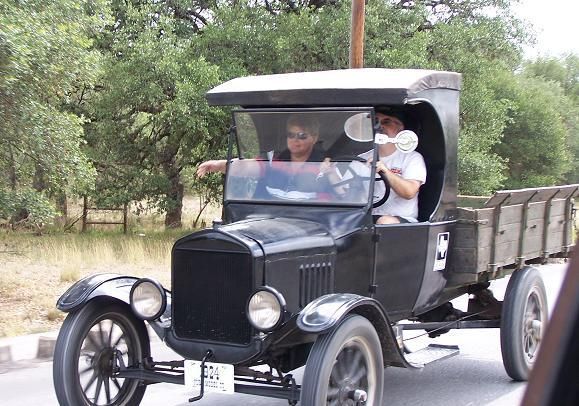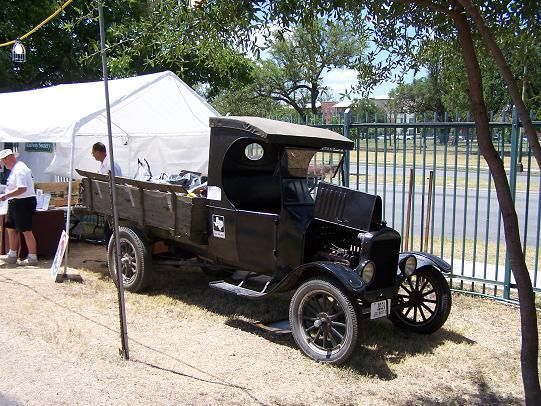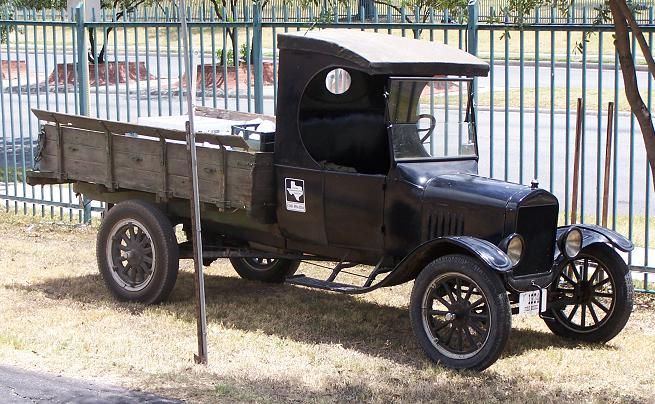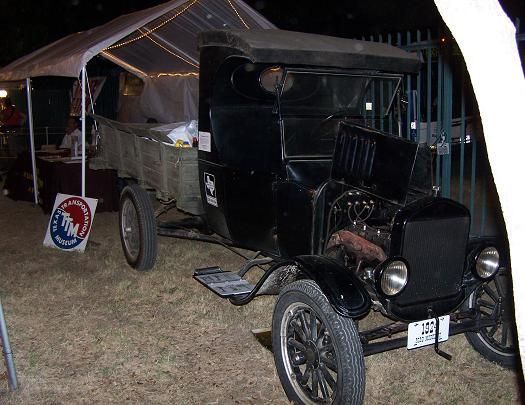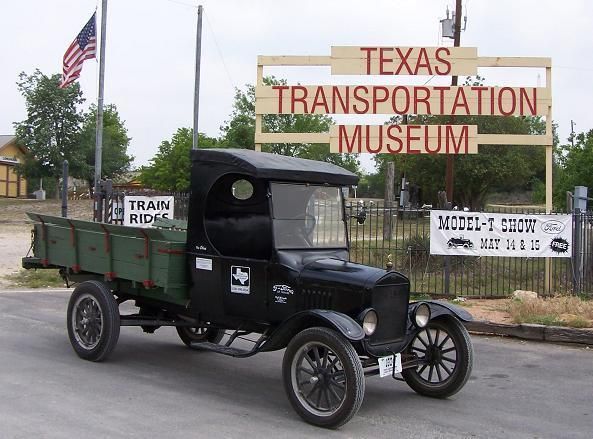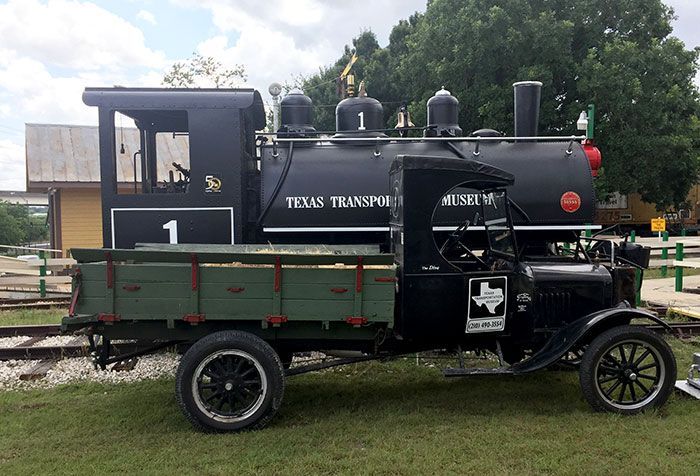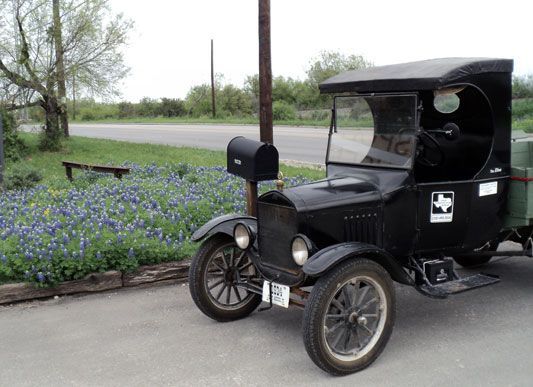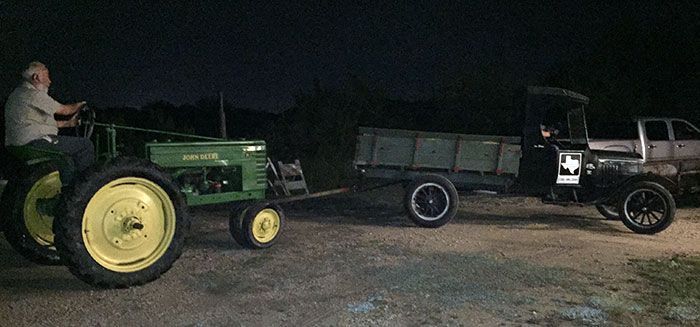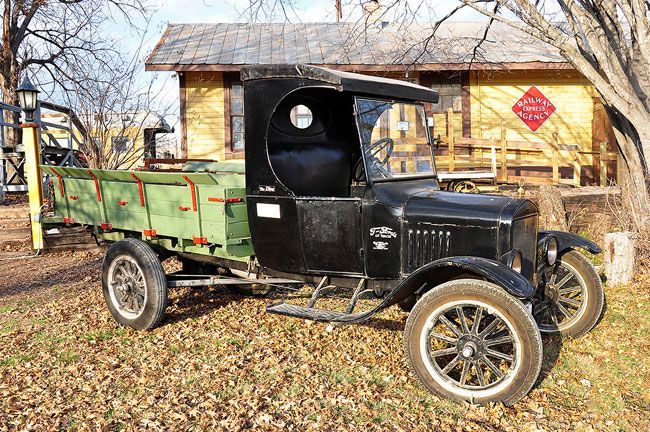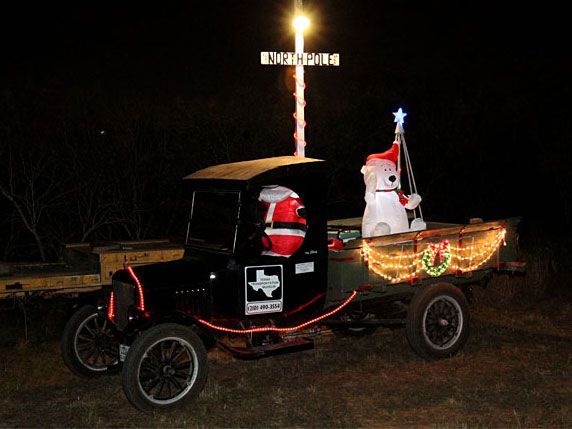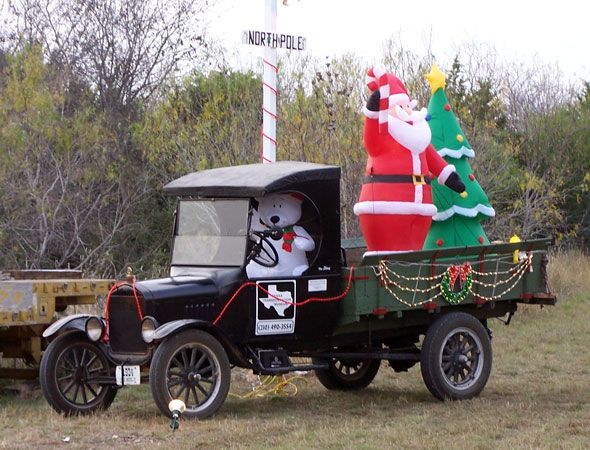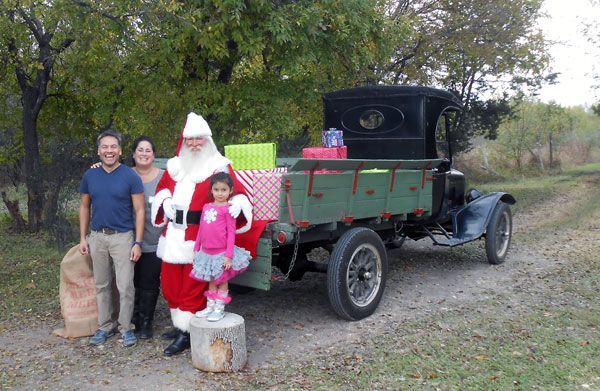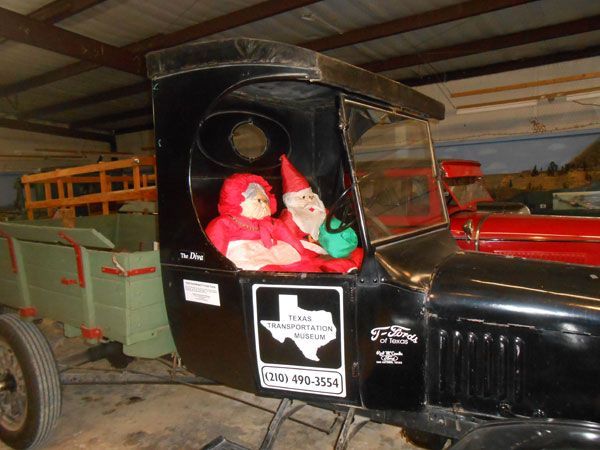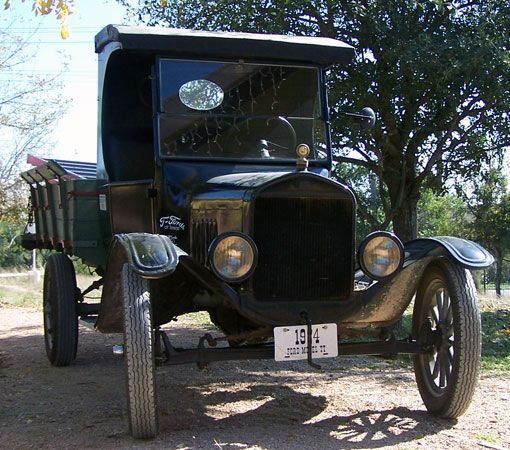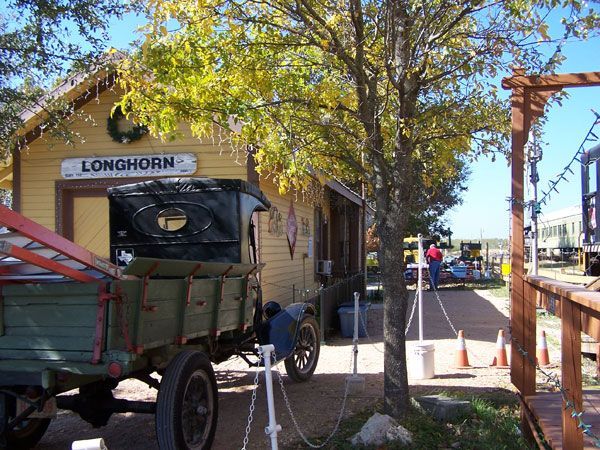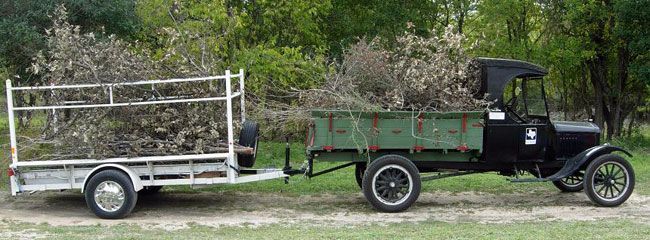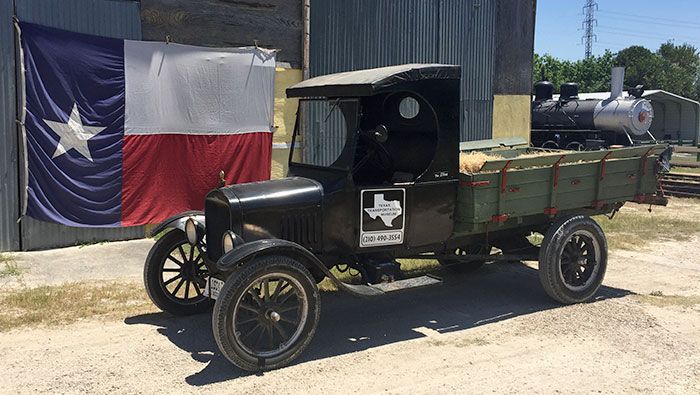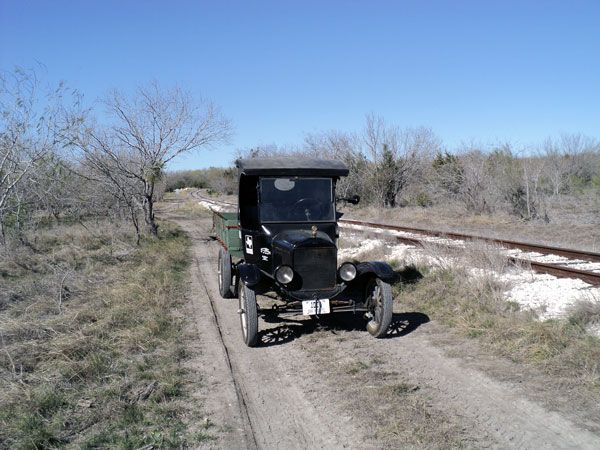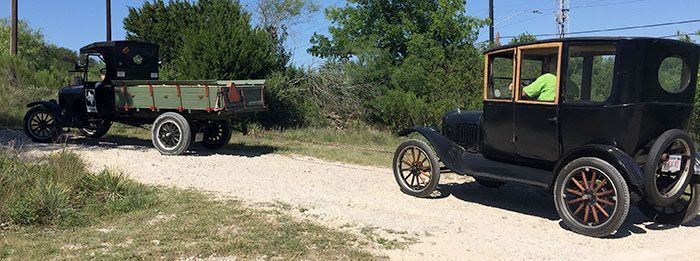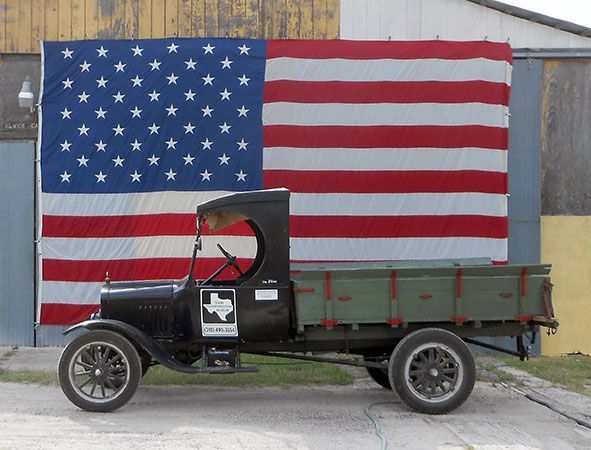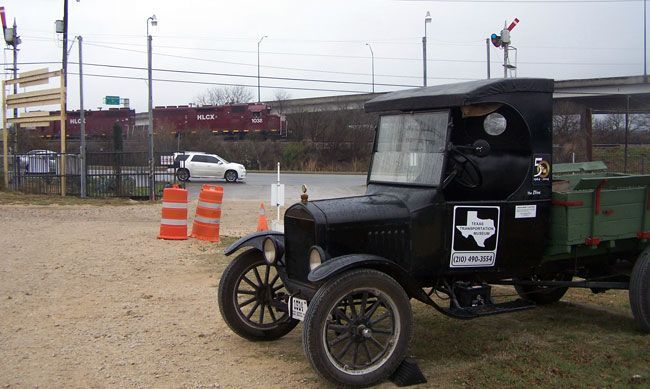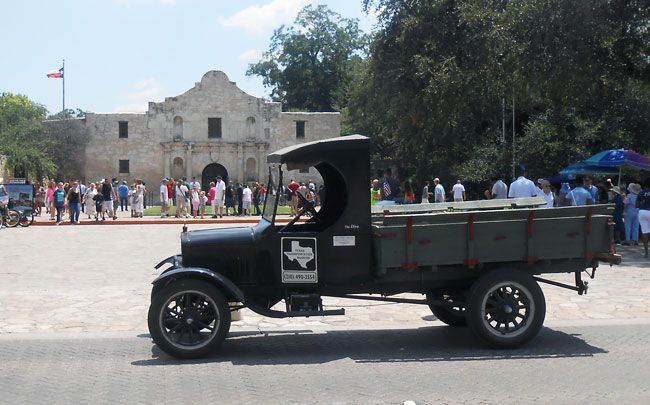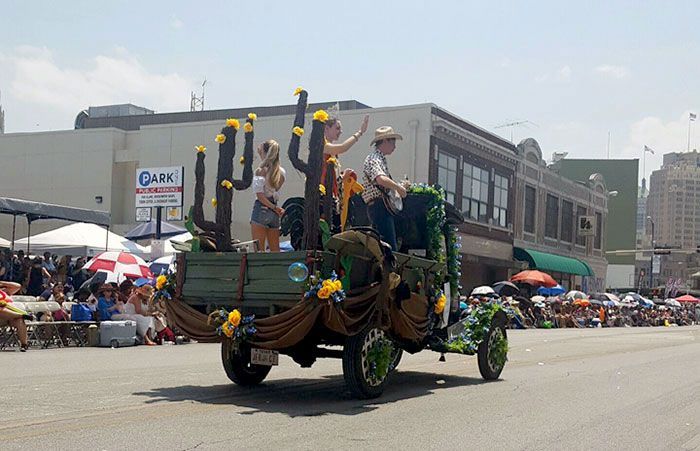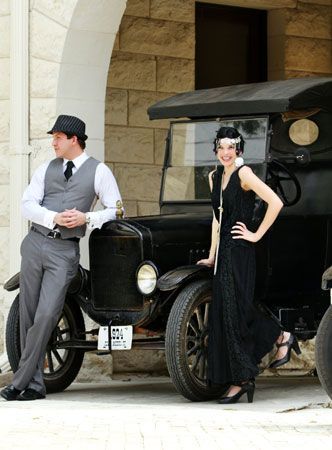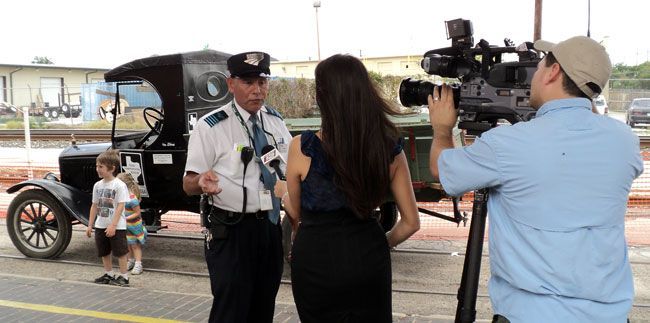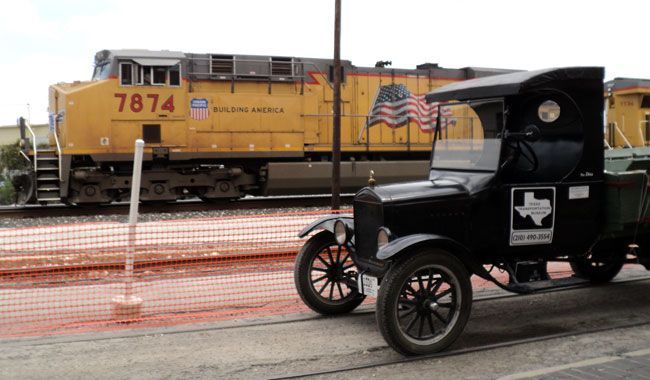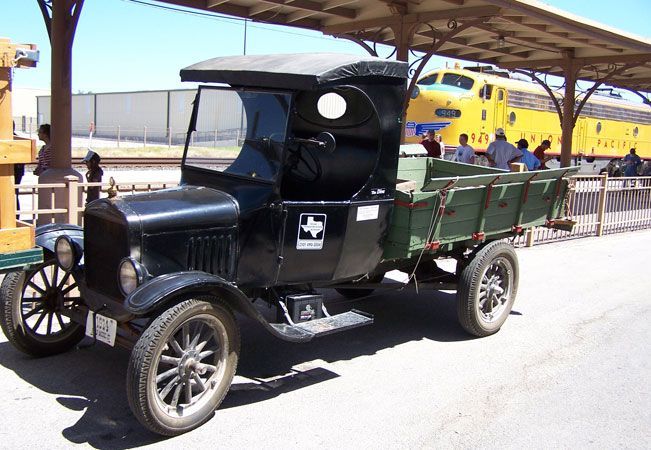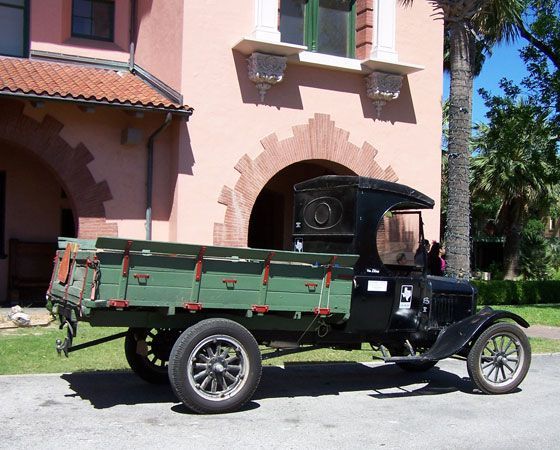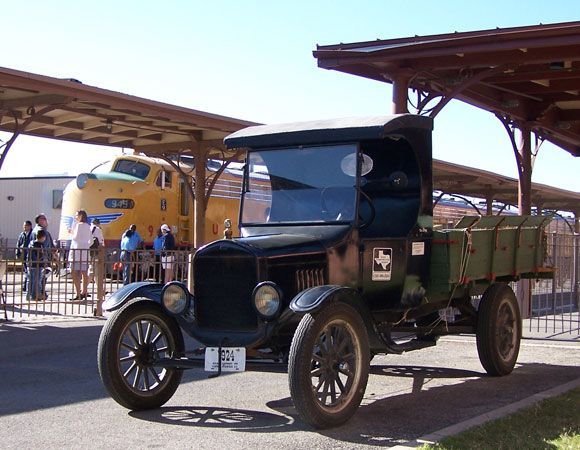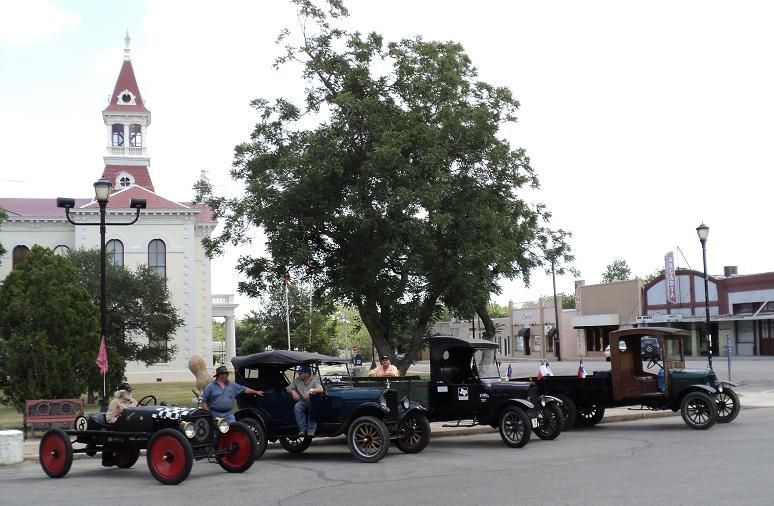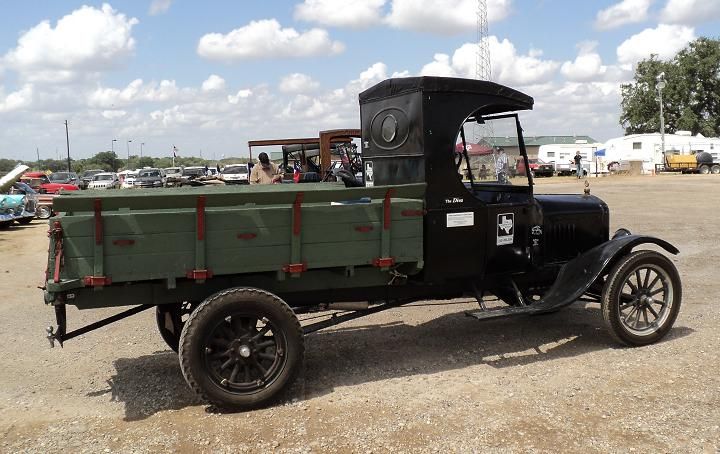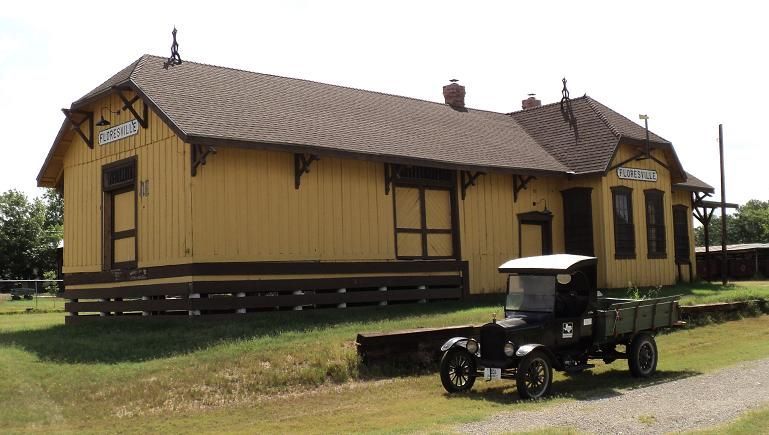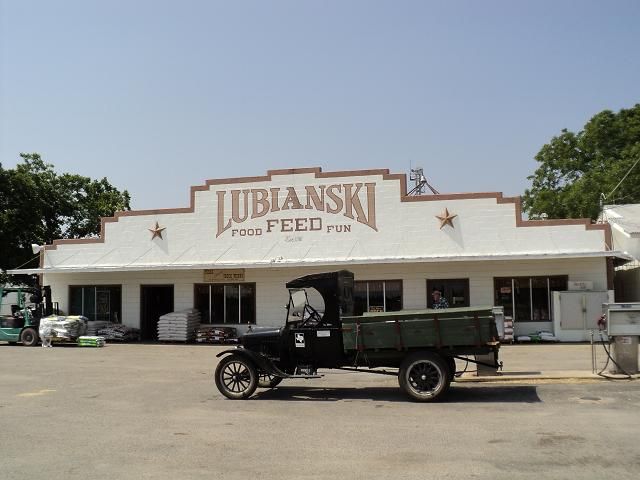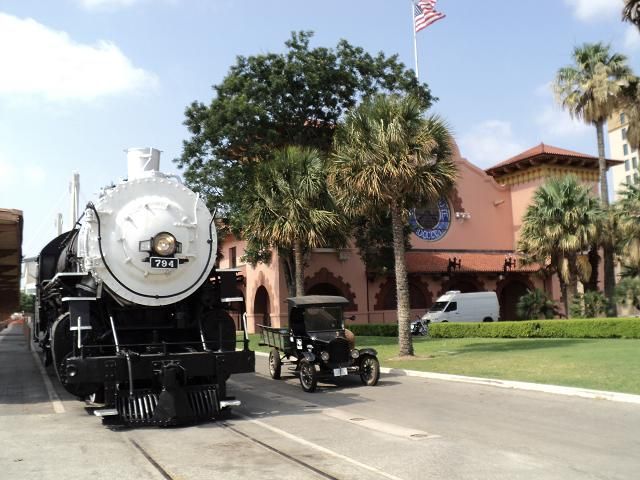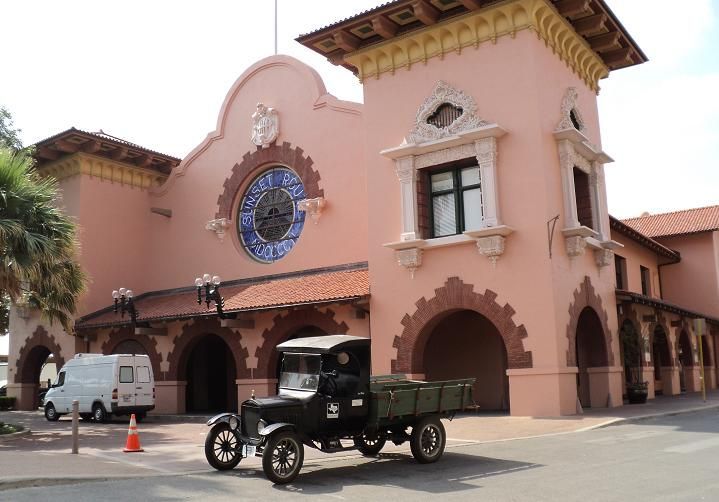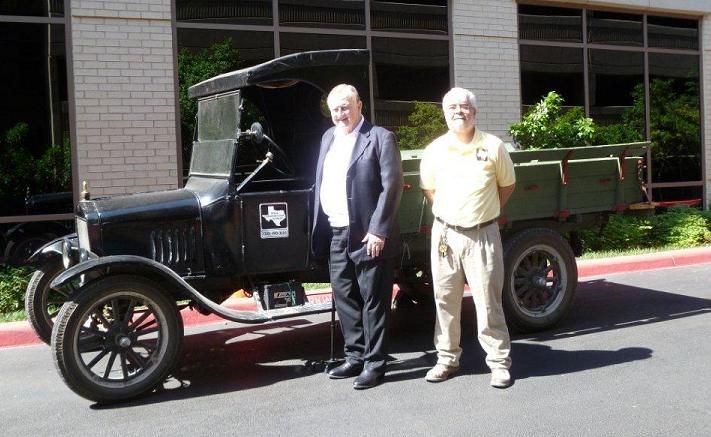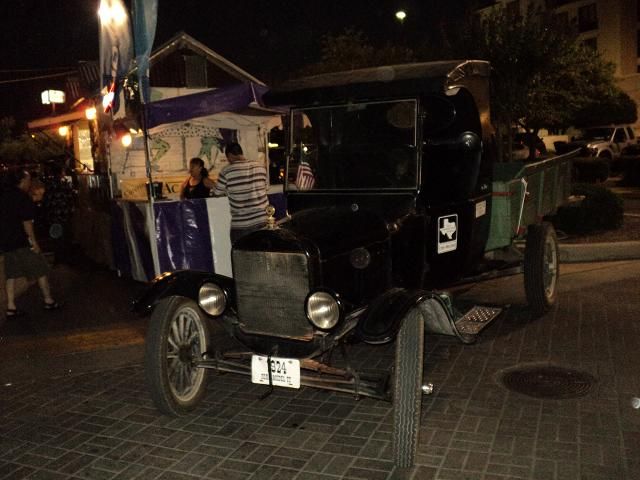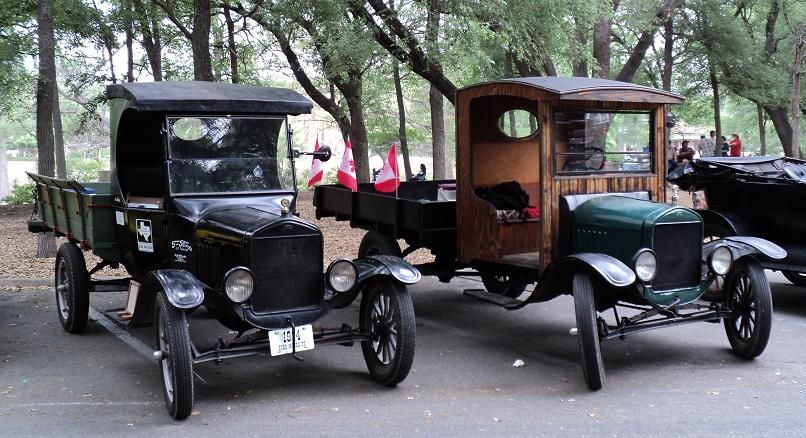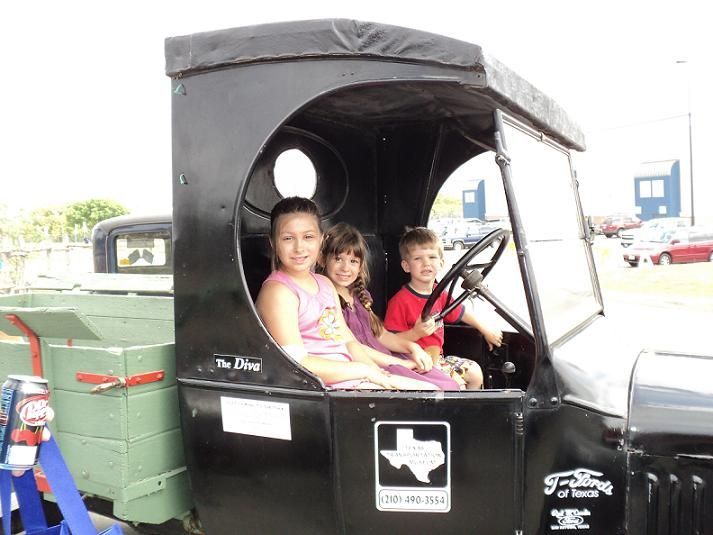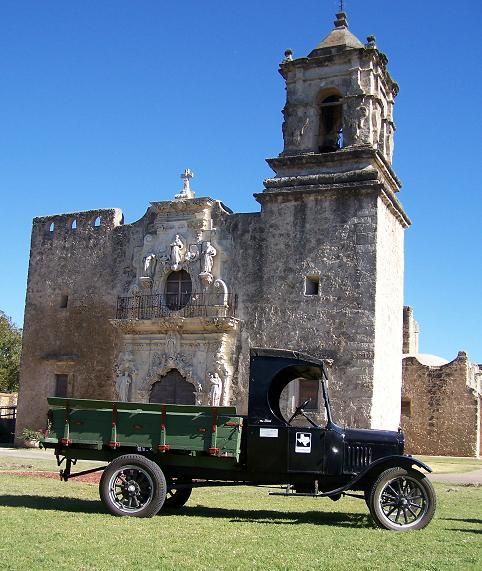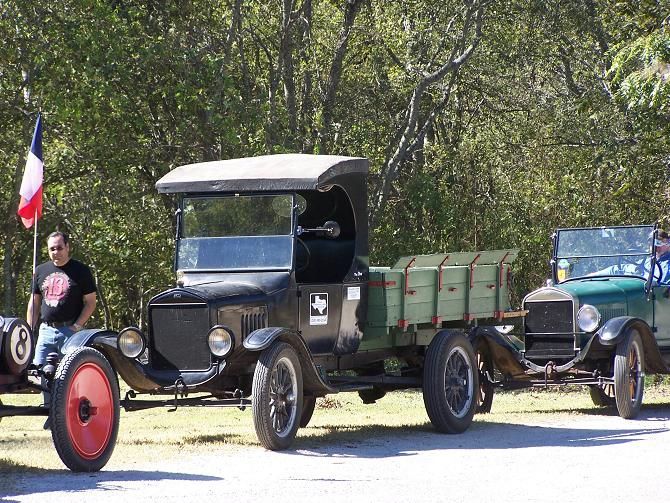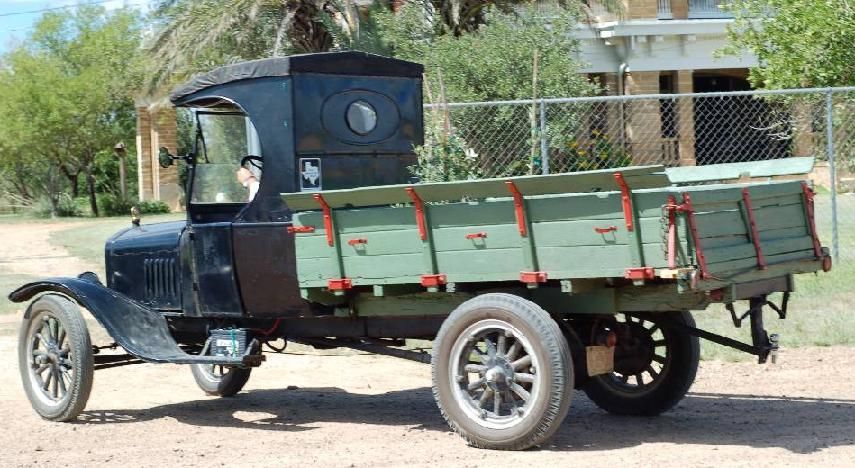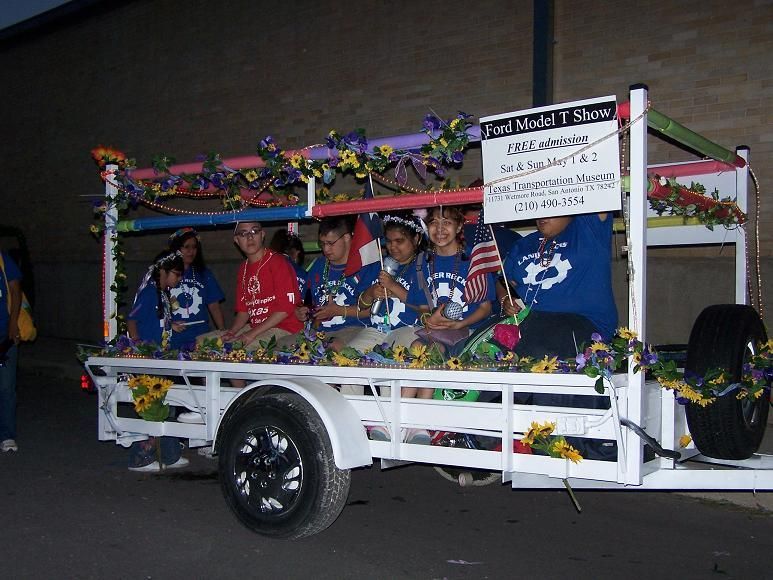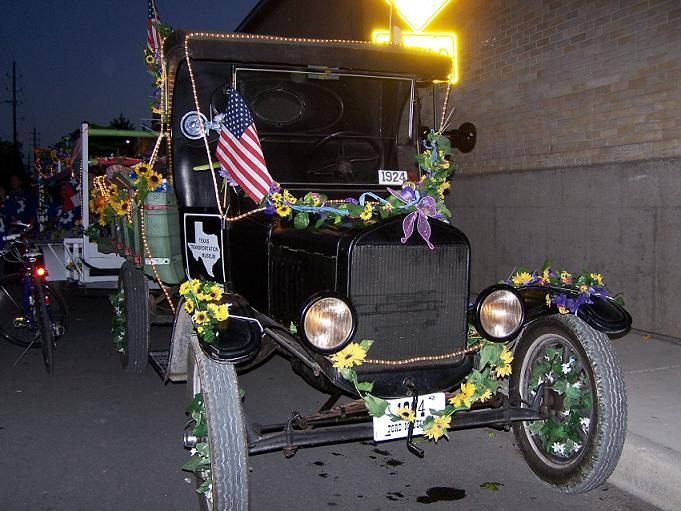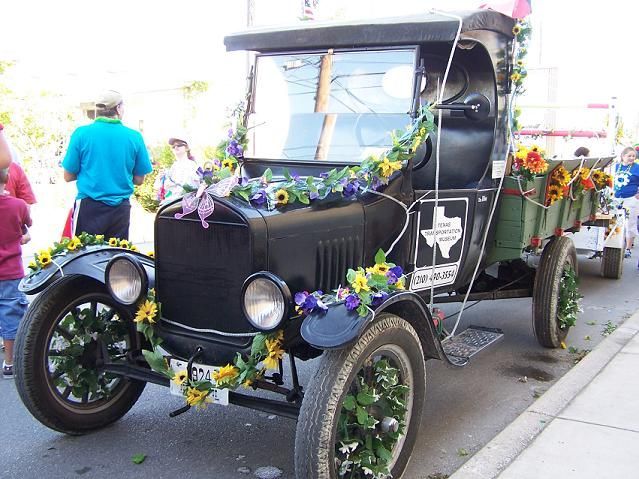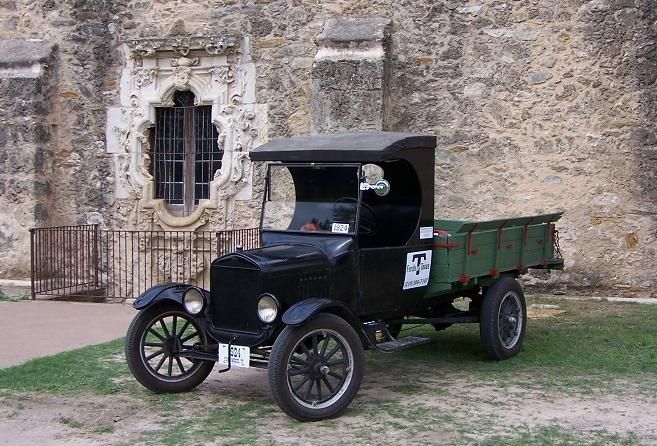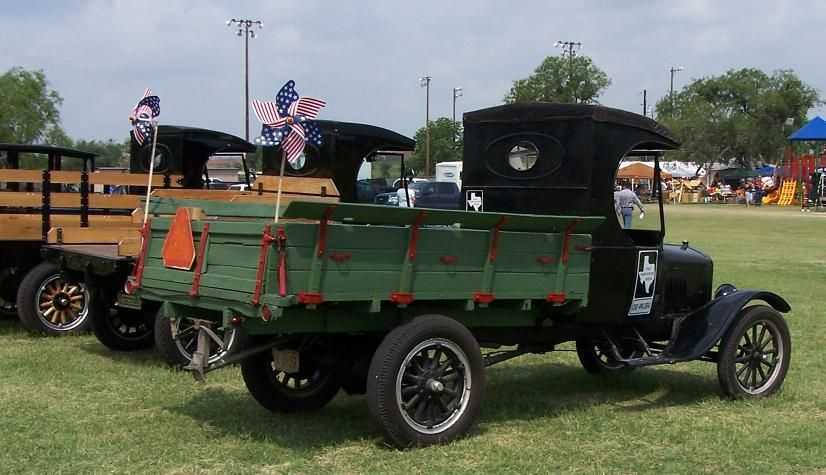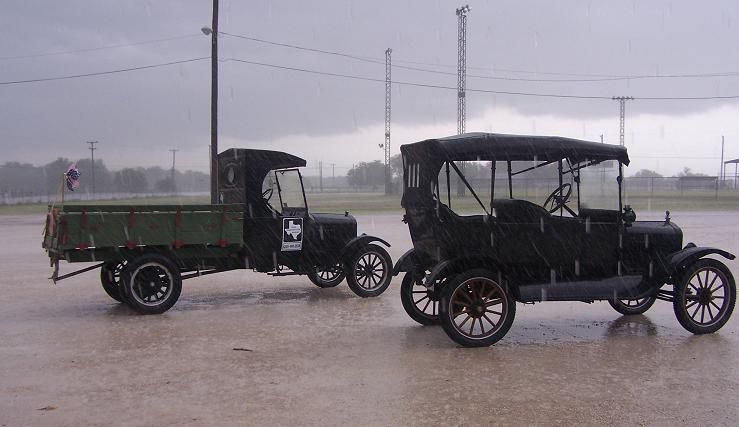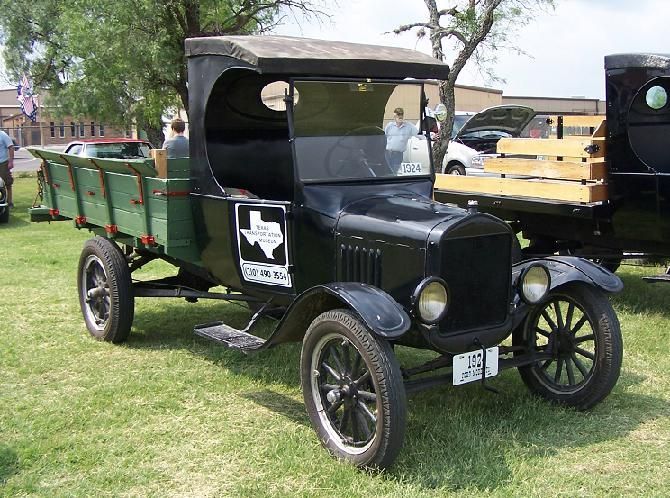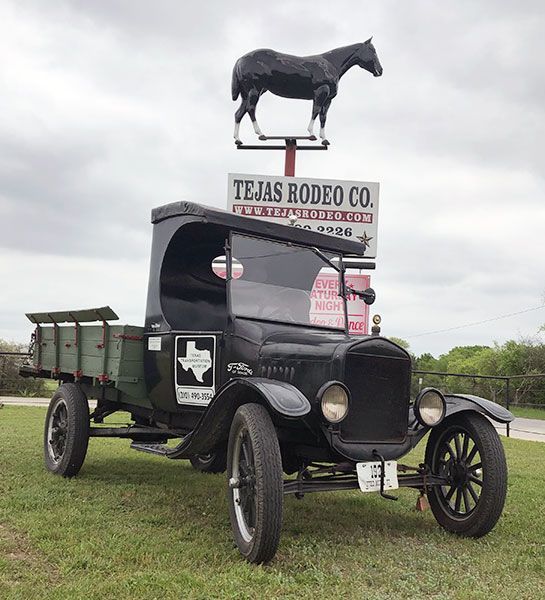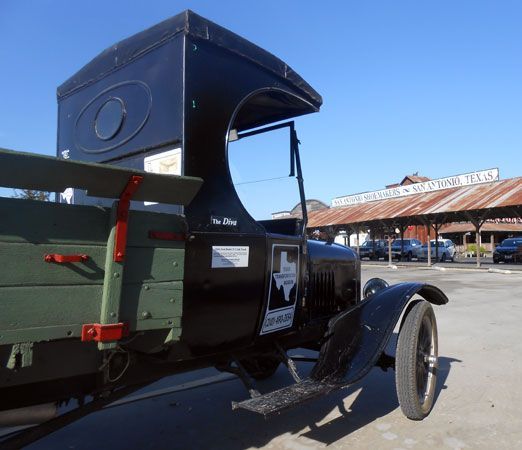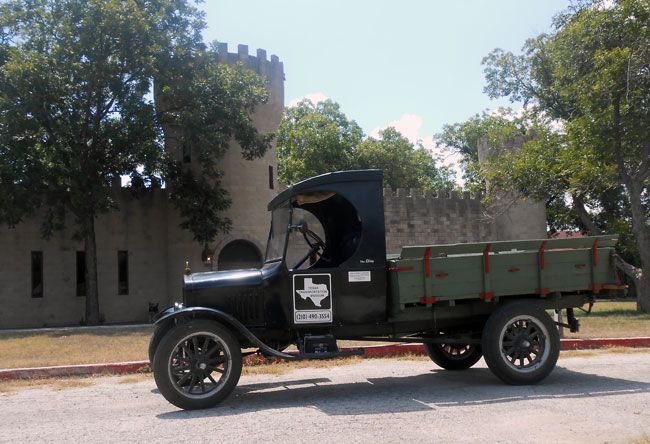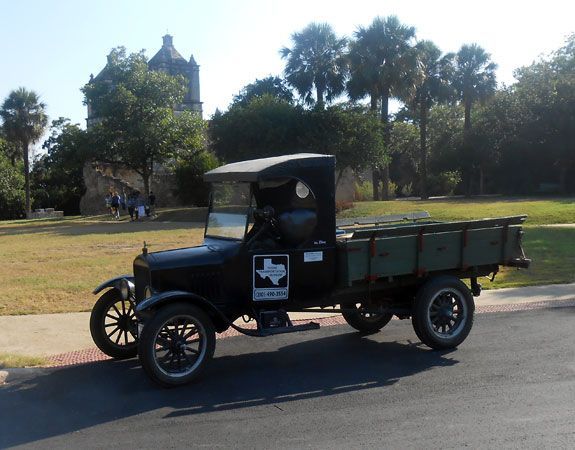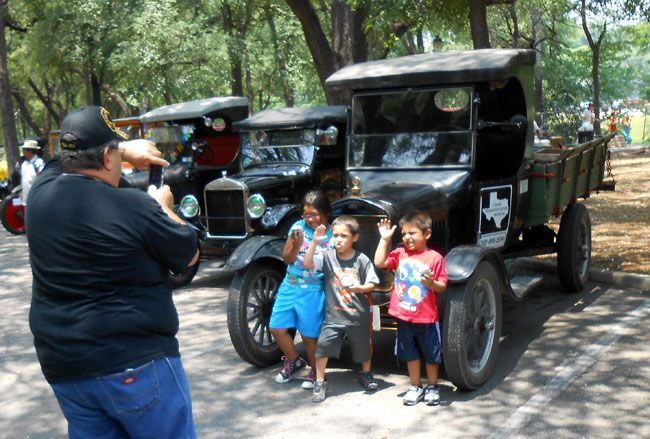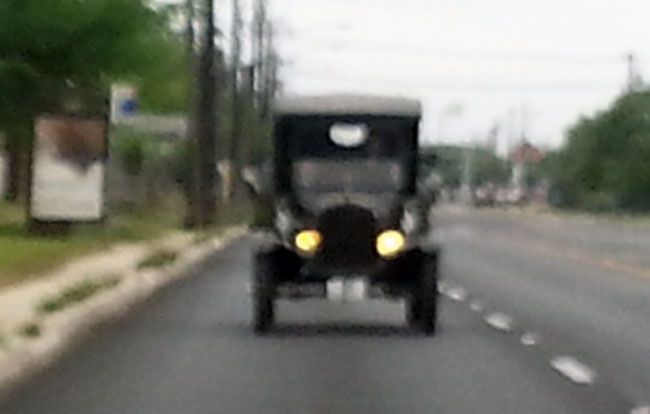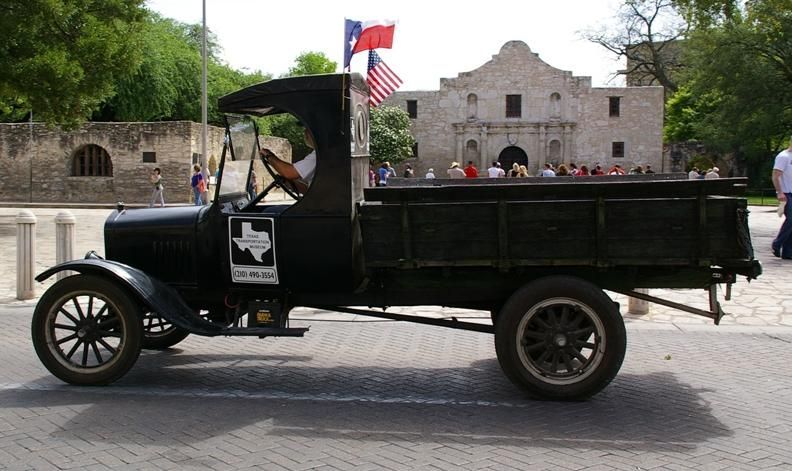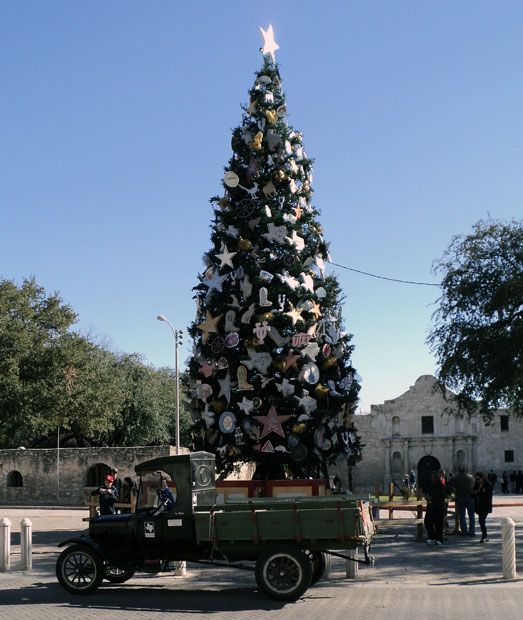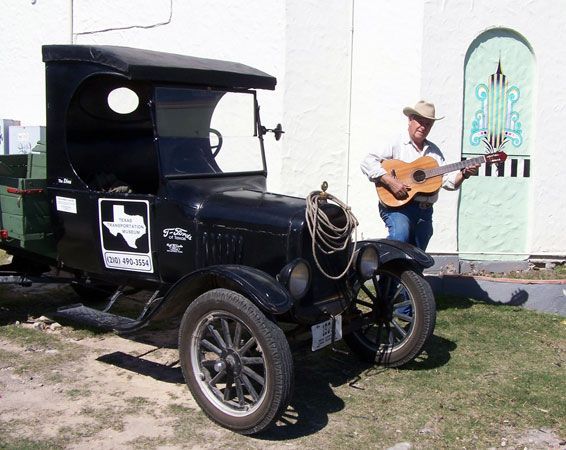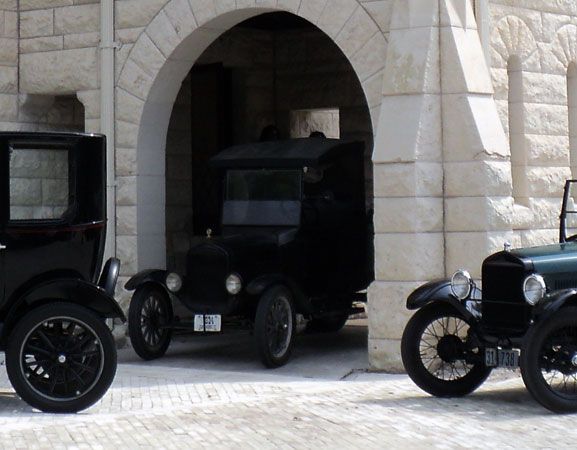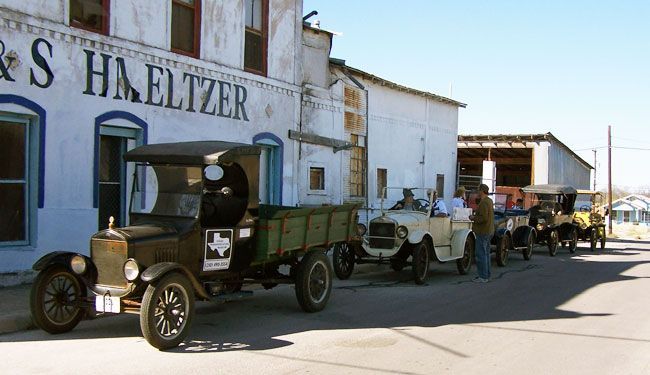1924 Ford Model T Truck
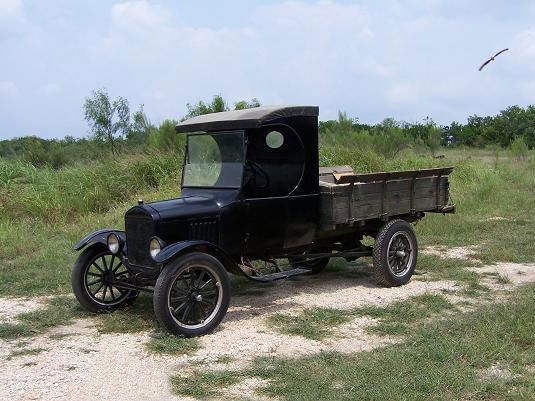
Technical Specifications
Year:
1924
Make:
Ford
Model:
Model TT 1 ton truck. TTs had longer, stronger chassis with lower gear ratios
Body Style:
C Cab
Engine:
4 Cylinder, 177 cubic inch, (2.9 L) capable of 20 HP at 1,600 rpm
Transmission:
2-Speed planetary fitted with a Ruckstell 2-Speed underdrive
Drive:
Rear wheels via low ratio worm gear rear end
Top Speed:
24 mph
Brakes:
Work via the transmission. Drums on rear wheels for parking only.
Wheel Base:
125 inches (Regular T's have a 100 inch wheel base)
Length:
210 inches
Height:
82 inches
Width:
72 inches
Weight:
2,800 pounds
Wheels:
21 inch in front, 20 inch in rear, wooden spokes
Electrical System:
6-volt with magneto and generator to recharge battery, front and rear lights
Start System:
Electric starter motor
Features:
No winshield wiper, side windows or turn indicators. No speedometer, temperature or gas gauges, only a factory installed volt meter.
Additions:
Brake lights and mirrors have been added for safety. Motometer (Radiator cap mounted temperature gauge)
Production:
139,435 Ford Model TT's were built in 1924
Original Price:
$400 ($6,740 in today's money)
Status:
Driven frequently on and off museum property
1924 Ford Model T Truck

This vehicle is the heavy-duty truck version of the Model T, called the Model TT. Introduced in 1917, the Model TT was the only major variant of the Model T. TTs have a longer and stronger chassis and lower gear ratios to enable the standard Model T's 20 HP engine to move one ton of freight. This vehicle also has a factory-made cab. Prior to 1924, Ford only sold rolling chassis. It was left to local manufacturers to build the cabs and beds, which is why there is such a variety of different styles to be seen on the remaining examples. This vehicle also features one of the very few Ford-approved aftermarket adaptations, a Ruckstell "underdrive," which makes it easier for the vehicle to haul heavy loads over very poor roads and up hills. It allowed a top speed of 22 mph. A regular TT only made 17 MPH, while standard cars and runabouts, the light-duty trucks we now know as pickups, could zoom along at 35 MPH.
As mentioned, the TT has a longer wheelbase than the regular T, 125 inches compared with 100. When introduced in 1917 as a rolling chassis only, with neither cab nor bed, the TT cost around $600.00, with another $100 or so for a custom-made body by a local builder. ($100 in 1917 is the equivalent of $1,620 today.) By 1924, the cost of a new TT had fallen to around $400. To stimulate sales, Ford introduced its first factory-made cab. Known as the C-cab, it was only made for two years. Ford also introduced its first factory-built bed for the rear of the truck. This was quite small, and many people, including the folks who owned this vehicle, declined to buy it or removed it immediately for something bigger. The bed on this truck looks as if it could have come straight off an old horse-drawn wagon, which was quite common. Today, whatever else you can say about it, it certainly has the patina of age.
The TT was introduced in 1917. 39,000 Ford Model TT trucks were used by Allied forces during World War One, many as ambulances. The TT was Ford's acknowledgement of the longstanding use of Model Ts for commercial purposes. Indeed, the company continued to sell regular vehicles as rolling chassis as well.
Another distinguishing feature of the TT is its wheels. Its wheels have shorter, stouter spokes and a wider rim to accommodate stronger tires than the high, narrow wheels on regular Model Ts. The spokes on the front wheels are slightly longer and thinner than those on the rear, which has a different, stronger inflatable tire to handle most of the weight. This was a step up from the old days when most trucks had solid rubber at the back.
Other than that, this old truck is almost as stripped as the day it left the factory. Its only gauge is a voltmeter. There is no speedometer or fuel gauge. You check fuel by dipping a measuring stick into the tank located under the seats. It does not even have a dipstick. You check the oil by opening the valves under the cab. It does have factory-installed electric lights, a horn, and a starter. We have added a "motometer," or radiator cap-mounted engine temperature gauge, plus a period-correct rear view mirror and brake lights for safety. When it was new, it would have been possible to acquire an aftermarket set of side curtains to protect the occupants from the worst of the weather through the nonexistent side windows.
Restoration to working condition
On September 22, 2007, work began to return this long, stationary Ford Model T truck to active duty. Daniel Bratcher and Mike Mackechney of the local San Antonio Model T club, the "T Fords of Texas," began what would be a year-long process to get it running again. With the application of time, money, and effort, the truck was ready for prime time by June of 2008. It was driven to and from the Folklife Festival at the Institute of Texan Culture in Durango without incident. It has since become one of the most frequently driven museum vehicles, as the following pictures demonstrate.
Out and About Under its Own Power
On September 22, 2007, Daniel and Mike of the "Ford T's of Texas" swung by in a 1926 Ford Model T light pick-up and a 1926 Ford Model T open sedan with the intent of getting the museum's 1924 Ford Model TT truck running again. They removed the incorrect Ford Model A carburetor and modified inlet manifold and replaced them with proper Model T parts. They replaced the spark plugs and wires. They cleaned some light corrosion from some electrical parts, drained the oil, and performed some other light but important tasks. They drained out the old oil, put water in the radiator, some gas in the tank, and installed a battery, and lo and behold, the old truck fired on the first stomp of the starter button and started on the second attempt. After tinkering some more, it was decided to see if the truck's transmission was capable of moving the truck. One thing led to another, and even though the carburetor was not properly hooked up and the brakes were questionable at best, before you knew it, the truck was out on the museum's grounds, moving under its own power. Though much more work needed to be done, everyone involved was pretty elated at the level of success on the first day.
In early June 2008, after far more work and expense than anyone anticipated, the vehicle finally made its debut on the public roads of San Antonio and drove like a thoroughbred champion! With its Ruckstell rear end in "high," the old truck is only capable of going around 20 MPH. Since September 2007, it has been in and out of the shop for a whole host of necessary repairs. The source of the horrible noise coming from the engine was found to be a metric thread nut that somehow made its way into the oil pan. It came loose from the sediment after the engine warmed up. The front end was stripped as well. Removing some of the bearings was a feat in and of itself because apparently the last person to touch them was the factory employee who fitted them in 1924. The last piece of the puzzle was the electrical system. The engine might run, but not very well. Museum members Tony and Hugh took everything out to check and clean all the contacts and troubleshoot the system. Once everything was hooked back up, the engine sounded great. Now the truck can go to high gear without stalling. The biggest kick was when the Ruckstell was put into high gear and everything still worked. And it was found that this old T can scoot right along!
More Work - It Never Ends!
There is no such thing as a trouble-free Model T. They require almost constant attention. Much of the stuff you find on more modern vehicles is designed to prevent this. constant need for tinkering and adjustments. What you find under the hood of any Model T is the absolute bare minimum required to achieve horseless progress. These vehicles lack fuel, oil, and water pumps, for example. And not because they had not been invented but because maintaining them was most likely beyond the scope of the average farmer, who had to be self-reliant simply because there were no options. The manuals that came with these vehicles were almost wordless, a recognition that illiteracy was more common than not before World War One. With this rugged simplicity came the fact that the vehicle was either set up just right or it wouldn't run worth a hoot. But fixing them with the most basic of tools would come easily to most farmers, who were used to fixing the other agricultural equipment on the farm. Fixing a T is surprisingly intuitive once you forget about all the "extra" stuff on today's cars and trucks.
Public Debut - June 2008
Finally, just in time for one of the biggest public events in the San Antonio calendar, the Folklife Festival at the Institute of Texan Cultures, held in the middle of June every year, our 1924 Ford Model TT was ready for prime time. Almost. The truck was unable to make it on the downtown cruise with other Model Ts during TTM's "Model Ts. @ TTM" show in May, though it was on display. Following that, the final work to make it ready was completed except for one important element: the tires. Their deteriorated state became unavoidable during a trial run around the block, a ten-mile jaunt that is quite taxing for old cars, with some long hills and plenty of traffic lights. An attempt to use some other Model T rims and tires failed as this truck uses an unusual size, but fortunately, in the nick of time, we found someone in town who had a pair of the correct front tires and a company willing to fit them. (The rear tires aren't good, but they had to suffice because none could be found in town.) Once fitted, and this is a short phrase for a lengthy process, the truck was taken out for another reliability run, and this time it ran even better. What a difference the new rubber made! So, we were off to the races. Or, more accurately, the Folklife Festival. The truck made the trip downtown pretty well and was seen by tens of thousands of people. However, it was on the trip back to the museum, past the Alamo, as light was falling virtually all the way up the hill, that the old TT really showed its mettle. The more this truck is driven, the better it seems to run. Also, the driver gains experience and can get better performance. The truck threw off its reserve and took those hills in stride. Now we can't wait for its next adventure.
Ongoing Activity
After sitting idle for almost thirty years, it was to be expected that the vehicle would experience technical difficulties. These were so capricious that they earned the name "Diva" for their ability to run perfectly well in private but to act up once they were about to be in public. Nonetheless, as you can see in the pictures below, it has become one of the most frequently used vehicles at the museum. It took part in its first parade in the St. Patrick's Day celebrations in March 2009. It then took part in the downtown cruise past the Alamo during the 2009 San Antonio Ford Model T show, which has become an annual fixture in the museum's calendar. With its bed repainted in its original colors, it has been driven as far as La Verania and Floresville for parades and car shows. It has been driven around San Antonio's historic missions and taken by trailer for a movie shoot in Asherton, Texas. Watch this space for more pictures of its latest exploits.
1924 Ford Model TT at TTM
The 1924 Ford Model TT at Various Public Events
Transportation Museum
CONTACT US TODAY
Phone:
210-490-3554 (Only on Weekends)
Email:
info@txtm.org
Physical Address
11731 Wetmore Rd.
San Antonio TX 78247
Please Contact Us for Our Mailing Address
All Rights Reserved | Texas Transportation Museum
